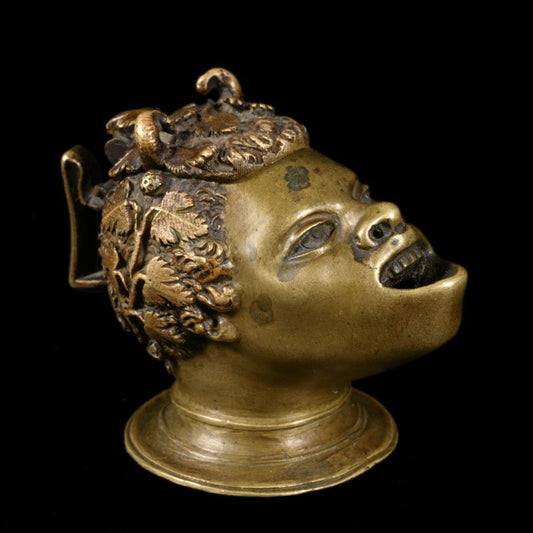Ancient esoteric objects bear witness to a little-known yet fundamental aspect of the spiritual and cultural history of the Western world. Far from being mere curiosities, they are rooted in symbolic, religious, and philosophical traditions in which the visible and the invisible, the sacred and the forbidden, long coexisted.
Symbolism, beliefs, and representations
Since the Middle Ages, Western esotericism has given rise to a rich and complex iconography. Demonological figures, apotropaic symbols, protective talismans, and ritual objects reflect human questions surrounding evil, temptation, hidden knowledge, and forces perceived as operating beyond the visible world.
Within the Christian context, these representations were not always intended to glorify the occult, but were often meant to denounce it, explain it, or warn against it. Sculptures, engravings, and symbolic objects thus served as moral and pedagogical supports, recalling the dangers of transgression and the limits imposed upon humanity.
Esoteric objects and ancient practices
Ancient esoteric collections encompass a wide variety of objects: manuscripts and grimoires, engraved amulets, talismans, ritual instruments, or artefacts linked to hermetic, alchemical, and magical traditions. These often unique pieces reflect the intellectual and spiritual practices of their time far more than any living or contemporary beliefs.
Many of these objects were preserved for study, scholarly curiosity, or as historical testimony. They shed light on the evolution of mentalities, the circulation of esoteric knowledge, and the ways in which past societies sought to understand and influence the forces surrounding them.
Collecting and transmission
Today, ancient esoteric objects are primarily sought after by collectors, historians, researchers, and informed enthusiasts. Their value lies as much in their material rarity as in their symbolic and documentary significance.
The collection of esoteric objects presented on Relics.es is part of a broader effort to preserve and transmit cultural heritage. Each piece is offered as a testimony of the past, allowing an exploration of the history of beliefs, fears, and representations of the invisible, without ever encouraging contemporary esoteric practices.
These artefacts, silent witnesses to ancient traditions, offer a fascinating insight into the Western spiritual imagination and constitute collectible pieces of strong historical and cultural value.





















